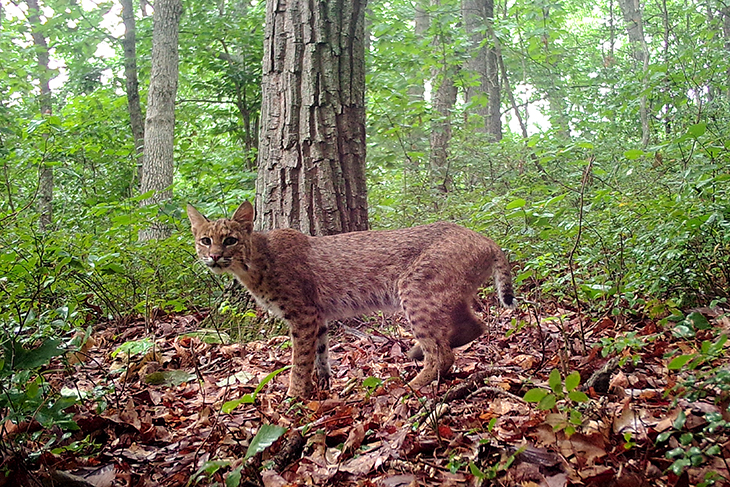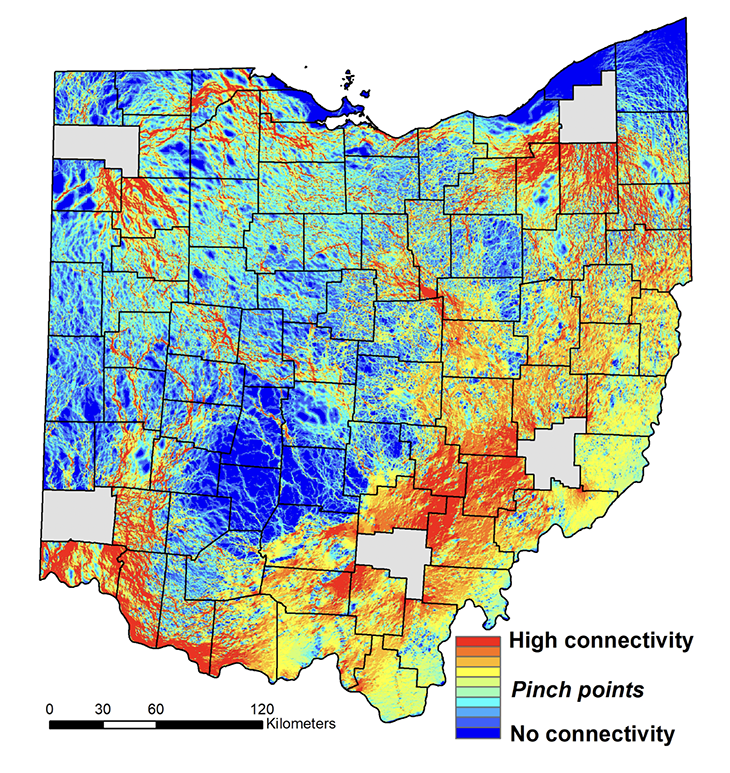
June 12, 2021
It took more than a century for bobcats to return to Ohio after being wiped out by hunting, trapping and habitat loss. Today, the wild cats are finally settling into a permanent Ohio home again, though a lot has changed during their absence. Vast development and agriculture have replaced much of Ohio’s forests, leaving bobcats with only a fraction of the habitat once available to them.
To better understand bobcat habitat suitability and connectivity in present-day Ohio, a team of biologists from Ohio University pieced together data from bobcat sightings in the state over the past two decades and used computer models to identify potential dispersal corridors.

“We’ve seen how anthropogenic changes have altered the bobcat population and limited it as it’s recolonizing,” said Madeline Kenyon, a fourth-year biology student at Ohio University and a co-author on the study, which was funded by the Ohio Department of Natural Resources. The study is part of a larger research effort to evaluate bobcat population size, roadkill mortality risk and future population scenarios in Ohio to help inform management decisions.
Bobcats today are mostly constrained to southeastern Ohio, where much of the remaining forest is located, though bobcat sightings have occurred in western and central Ohio, Kenyon said. Bobcat presence is highest in areas with high proportions of forest and pasture and little to no farmland.
Watch Kenyon’s OWMA Conference presentation about the bobcat study >>
So how are bobcats getting to other parts of the state? According to the computer models created by Kenyon and her research team, one possible dispersal corridor is along the Ohio River Valley between south and southwestern Ohio. This path could allow bobcats to avoid traveling through agricultural or urban development, Kenyon said.
“There are other areas where bobcats could persist that likely have not been colonized yet,” said Viorel Popescu, an associate professor of conservation biology and principal investigator of the lab leading the bobcat research.
The habitat study also found several potential bobcat routes to central Ohio, mostly associated with small forest patches along rivers and streams.

“There are many studies in other states that show bobcats thrive in suburban landscapes, and there is some evidence for Ohio,” Popescu said, noting the importance of protecting important bobcat dispersal avenues and periodically re-evaluating the extent of bobcat recolonization.
“While the bulk of the population is likely to be confined in eastern and southern Ohio, the connectivity corridors between these areas and other regions of Ohio and beyond into Michigan and Indiana are likely very important for the regional population,” Kenyon said.
As for what Ohioans can do to help?
“I think it’s really important to continue educating ourselves about bobcats and where they are in the state,” Kenyon said, emphasizing the importance of reporting bobcat sightings to ODNR while also keeping a safe distance from the animals. Bobcats are unlikely to attack humans and should not be fed or approached, according to ODNR.
“The success story of bobcat recolonization in the Midwest gives us hope that wildlife and people can coexist, and that sound habitat and population management can help stop biodiversity loss,” Popescu said. “My hope is that Ohio will continue to support a strong and viable bobcat population, and that management of bobcats in Ohio will be sustainable in the long term.”